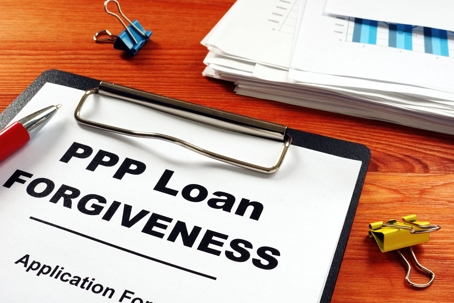On March 27, 2020, the President signed into law the Coronavirus, Aid, Relief and Economic Security Act, commonly known as the “CARES Act”. As many know, the CARES Act was enacted in response to the coronavirus (COVID-19) outbreak and its widespread impact on the economy, public health, individuals and businesses alike. One of the economic relief measures established by the CARES Act is the Paycheck Protection Program (“PPP”), which provides cash flow to small businesses in the form of loans guaranteed by the Small Business Administration (“SBA”) to employers who maintain their payroll. These PPP loans are not required to be personally guaranteed or secured by any collateral.
Although technically a loan from a bank, a borrower may be eligible to have its PPP loan forgiven where certain conditions are met. Under the CARES Act as originally enacted and its implementing SBA regulations, the amount of the loan forgiven was based on the amount of the proceeds of the loan a borrower used within the 8-week period after loan origination and required a borrower to use the funds for payment of certain qualifying expenses: (1) payroll costs; (2) interest on a covered mortgage; (3) rent obligations; and (4) covered utility payments. In addition, in order to be eligible for forgiveness, at least 75% of the PPP loan was required to be used for payroll costs with the remaining 25% used on non-payroll qualifying expenses. The amount of forgiveness was subject to reduction based on any reduction in the number of borrower’s full-time equivalent employees and any reduction in employees’ salary or wages, provided that there was an exemption where a borrower rehires employees and eliminates salary or wage reductions by June 30, 2020. To the extent not forgiven, the PPP loan as originally enacted had a 2-year repayment term at an interest rate of 1% per annum, with principal and interest payments deferred for the first 6 months to 1 year.
In light of the ongoing uncertainty caused by the coronavirus pandemic, these conditions on loan forgiveness eligibility were too limiting. Congress endeavored to loosen some of the restrictions, and on June 5, 2020, the President signed the Payroll Protection Program Flexibility Act of 2020 (the “PPP Flexibility Act”). The PPP Flexibility Act made several notable and important changes to the Paycheck Protection Program provisions of the CARES Act, which allows more flexibility to small businesses. These changes include:
- extending the “covered period”, i.e. the time in which borrowers have to use the loan proceeds to be included as part of the forgiven amount, from 8 weeks to the earlier of 24 weeks or December 31, 2020;
- reducing the percentage of proceeds required to be used for payroll from 75% down to 60%;
- increasing the percentage of proceeds allowed to be used for other non-payroll qualifying expenses from 25% to 40%;
- extending borrowers’ payment deferral period to the date on which the determined amount of forgiveness is remitted to the lender by the SBA, instead of limiting deferral to 6 months to 1 year;
- allowing borrowers until December 31, 2020, instead of July 30, 2020, to rehire employees to eliminate any reduction in full-time workforce and eliminate any reduction in salary or wages for PPP loan forgiveness;
- adding a new exemption regarding the requirement to maintain the same number of full-time employees where the borrower in good faith documents: (a) an inability to (i) rehire the same individuals and (ii) hire similarly qualified employees for unfilled positions prior to December 31, 2020; or (b) an inability to return to the same level of business activity that it was operating at before February 15, 2020 due to compliance required or guidance issued by CDC, HHS, or OSHA related to sanitation, social distancing, or any other worker or customer safety requirement due to COVID-19;
- extending the maturity date of the PPP loans made after June 5, 2020 to 5 years (PPP loans made before June 5, 2020 maintain 2-year maturity unless the lender and borrower agree to extend it to 5 years);
- allowing PPP loan borrowers to defer payment of their employer-portion of payroll taxes as well, instead of excluding those borrowers from this relief.
Although the new law extends the “covered period” to 24 weeks, small businesses who took out a PPP loan prior to June 5, 2020 may still elect to have the “covered period” end on the date that is 8 weeks after their loan was originated. Note, PPP loan borrowers who do not apply for loan forgiveness within 10 months after the last day of the covered period must commence loan payments at the end of the 10-month period.
The amendments provided for the PPP Flexibility Act are a welcome improvement to the Paycheck Protection Program and may allow for more small businesses to qualify for forgiveness of their PPP loans.
This article is for general information only and is not intended as and does not constitute legal advice or solicitation of a prospective client. It should not be relied on for legal advice in any particular factual circumstance.

